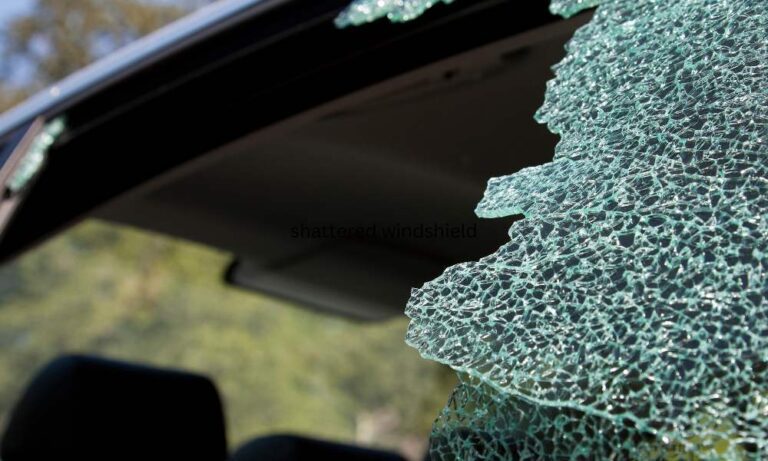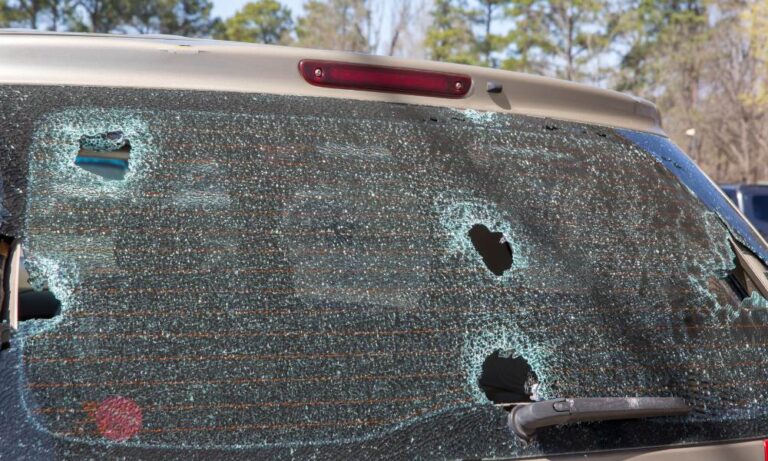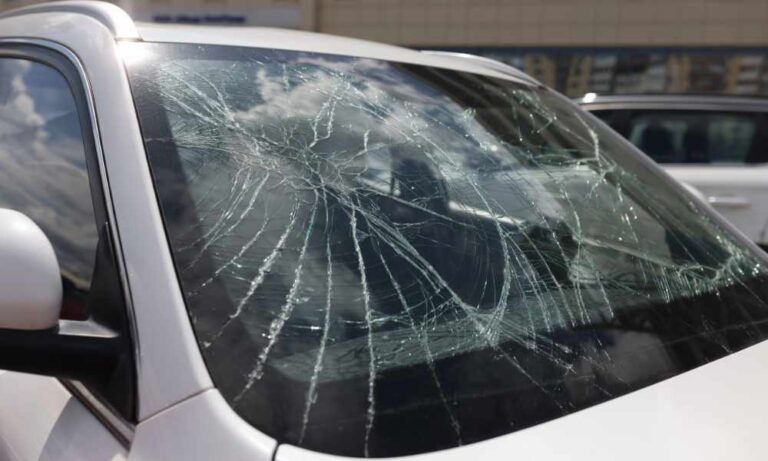The Hidden Dangers of a Shattered Windshield: Why Immediate Repair...
How Weather Conditions Can Worsen Cracks on Windshields

When it comes to maintaining your vehicle, the windshield often doesn’t get the attention it deserves. However, ignoring even small cracks or chips in your windshield can lead to significant problems, especially as weather conditions fluctuate.
At GlassFixit, Santa Clara County’s premier auto glass repair shop, we understand the intricacies of how weather can affect windshield integrity. Let’s delve into how different weather conditions can exacerbate cracks on your windshield and why timely repairs are crucial.
Possible Reasons For Windshield Cracks To Worsen
Temperature Fluctuations
One of the most common culprits behind worsening windshield cracks is temperature fluctuation. Santa Clara County experiences a wide range of temperatures throughout the year, and these changes can have a significant impact on your windshield.
Heat
During the summer months, high temperatures cause the glass to expand. If your windshield already has a small crack or chip, the heat can cause it to spread. This happens because the glass expands at a different rate than the surrounding materials, creating additional stress around the damaged area.
Moreover, using your car’s air conditioning can exacerbate the problem. The sudden shift from a hot exterior to a cooler interior causes a rapid change in temperature, leading to further stress and potential spreading of cracks.
Cold
Conversely, cold weather causes the glass to contract. In winter, especially during early mornings or late nights, temperatures can drop significantly. If you use your car’s heater to quickly warm up the interior, the rapid change from cold to warm can cause the glass to contract and expand unevenly. This uneven expansion and contraction can turn minor chips into larger cracks.
Moisture
Moisture is another factor that can worsen windshield damage. When water seeps into a crack or chip, it can get trapped. During colder weather, this water can freeze and expand, putting additional pressure on the glass and causing the crack to widen. In Santa Clara County, where occasional rain and dew are common, it’s easy for moisture to find its way into these small crevices.
UV Exposure
Prolonged exposure to UV rays can weaken the structural integrity of the windshield. The sun’s ultraviolet rays can deteriorate the plastic layer sandwiched between the layers of glass in your windshield. This weakening makes the glass more susceptible to cracking under pressure or impact. In areas with high UV exposure, such as Santa Clara County, even a small crack can quickly become a larger issue if not addressed promptly.
Wind and Debris
Strong winds, often experienced during storms or windy days, can carry debris that may hit your windshield and worsen existing cracks. Even small particles like sand or dust can create additional points of impact, causing cracks to spread. Ensuring your windshield is free of existing damage can help mitigate the risk of further breakage from such impacts.
Preventative Measures
Understanding how weather conditions can impact your windshield is the first step toward prevention. Here are some tips to help protect your windshield:
1. Regular Inspections
Regularly inspect your windshield for any signs of damage, such as chips or cracks. Early detection allows for prompt repairs, preventing small issues from becoming major problems.
2. Timely Repairs
Address any damage immediately. Small chips can quickly turn into large cracks if not repaired promptly. Many auto glass repair shops, like GlassFixit, offer quick and efficient repair services.
3. Parking Strategies
Whenever possible, park your car in shaded or covered areas. This minimizes exposure to extreme temperatures and UV rays, both of which can weaken the windshield and cause existing damage to spread.
4. Gentle Temperature Changes
Avoid sudden temperature changes. When it’s cold, gradually warm up your car instead of blasting the heater. Similarly, in hot weather, allow the car to cool down gradually before turning on the air conditioner full blast. Sudden changes can stress the glass and worsen any existing cracks.
5. Use a Windshield Protector
In extreme weather conditions, use a windshield cover. These protect against direct sunlight, snow, and ice, reducing the risk of thermal stress and physical damage.
6. Avoid Following Too Closely
Maintain a safe distance from the vehicle in front of you, especially on highways. Debris kicked up by other cars can cause chips and cracks. Safe following distances reduce the likelihood of such impacts.
7. Careful Cleaning
When cleaning your windshield, use a soft cloth and non-abrasive cleaner. Harsh chemicals and rough materials can scratch the glass, making it more susceptible to cracks.
8. Avoid Slamming Doors
Slamming your car doors can create vibrations that may worsen existing windshield damage. Close doors gently to prevent unnecessary stress on the glass.
9. Install Windshield Film
Consider applying a protective film to your windshield. This film can help absorb impacts from small debris, reducing the likelihood of chips and cracks.
10. Stay Clear of Construction Zones
Avoid driving through construction zones whenever possible. These areas often have loose gravel and other debris that can be kicked up and damage your windshield.
11. Use Proper Windshield Wipers
Ensure your windshield wipers are in good condition. Worn-out wipers can scratch the glass, especially if dirt or debris gets trapped under them. Replace wiper blades regularly to maintain clear visibility and protect the glass.
12. Maintain a Safe Distance from Trucks
Large trucks and construction vehicles often carry loose materials that can fall and hit your windshield. Keeping a safe distance from these vehicles can reduce the risk of damage.
13. Protect Your Windshield from Ice
In winter, avoid using hot water to de-ice your windshield, as the rapid temperature change can crack the glass. Instead, use an ice scraper or a de-icing solution.
By following these tips, you can significantly reduce the risk of windshield damage and ensure your vehicle remains safe to drive. Remember, if you do encounter any damage, GlassFixit is here to help with professional and timely repair services in Santa Clara County.
Conclusion
Weather conditions in Santa Clara County can have a significant impact on the health of your windshield. From temperature fluctuations to moisture and UV exposure, various factors can exacerbate existing cracks, turning minor issues into major problems.
At GlassFixit, we specialize in quick, efficient, and professional windshield repair and replacement services. Don’t let a small crack become a big problem. Contact us today to ensure your windshield is in top condition, no matter what the weather throws your way.
Popular Searches
Audi Windshield Replacement in Santa Clara County
Auto Car Window Tinting in Santa Clara County
Auto Glass Repair and Replacement in Santa Clara County
Auto Glass Repair in Santa Clara County
BMW Windshield Chip Repair in Santa Clara County
BMW Windshield Repair and Replacement Services in Santa Clara County
Car Window Repair in santa clara
Car Window Repair in Santa Clara County
Commercial truck windshield replacement
Dodge Windshield Repair and Replacement Services in Santa Clara County
Dodge Windshield Replacement in Santa Clara County
Glass repairs for cars near me
Honda pilot windshield replacement cost
Honda Windshield Repair and Replacement Services in Santa Clara County
Honda Windshield Replacement in Santa Clara County
Hyundai Tucson windshield replacement
Hyundai Windshield Repair and Replacement Services in Santa Clara County
Hyundai Windshield Replacement in Santa Clara County
Jeep Windshield Repair and Replacement Services in Santa Clara County
Jeep Wrangler Windshield Replacement in Santa Clara County
Kia Windshield Repair and Replacement Services in Santa Clara County
Kia Windshield Replacement in Santa Clara County
Mobile Auto Glass in Santa Clara County
Mobile Auto Glass Repair in Santa Clara County
Mobile glass replacement near me
Same day windshield repair near me
Toyota Camry side mirror glass replacement
Windshield Calibration in Santa Clara County
Windshield Chip Repair in Santa Clara County
Windshield chip repair near me
Windshield Repair and Replacement Services in Santa Clara County
Windshield Repair and Replacement Services Near Me
Windshield Repair in Santa Clara County
Windshield repair service near me
Windshield Replacement Near Me
Windshield Replacement Services in Santa Clara County
Read more Articles
The Costly Consequences of Neglecting Windshield Damage: How Repairs Save You Money
The Costly Consequences of Neglecting Windshield Damage: How Repairs Save...
Common Signs of a Defective Windshield: How to Spot Potential Issues
Common Signs of a Defective Windshield: How to Spot Potential...



